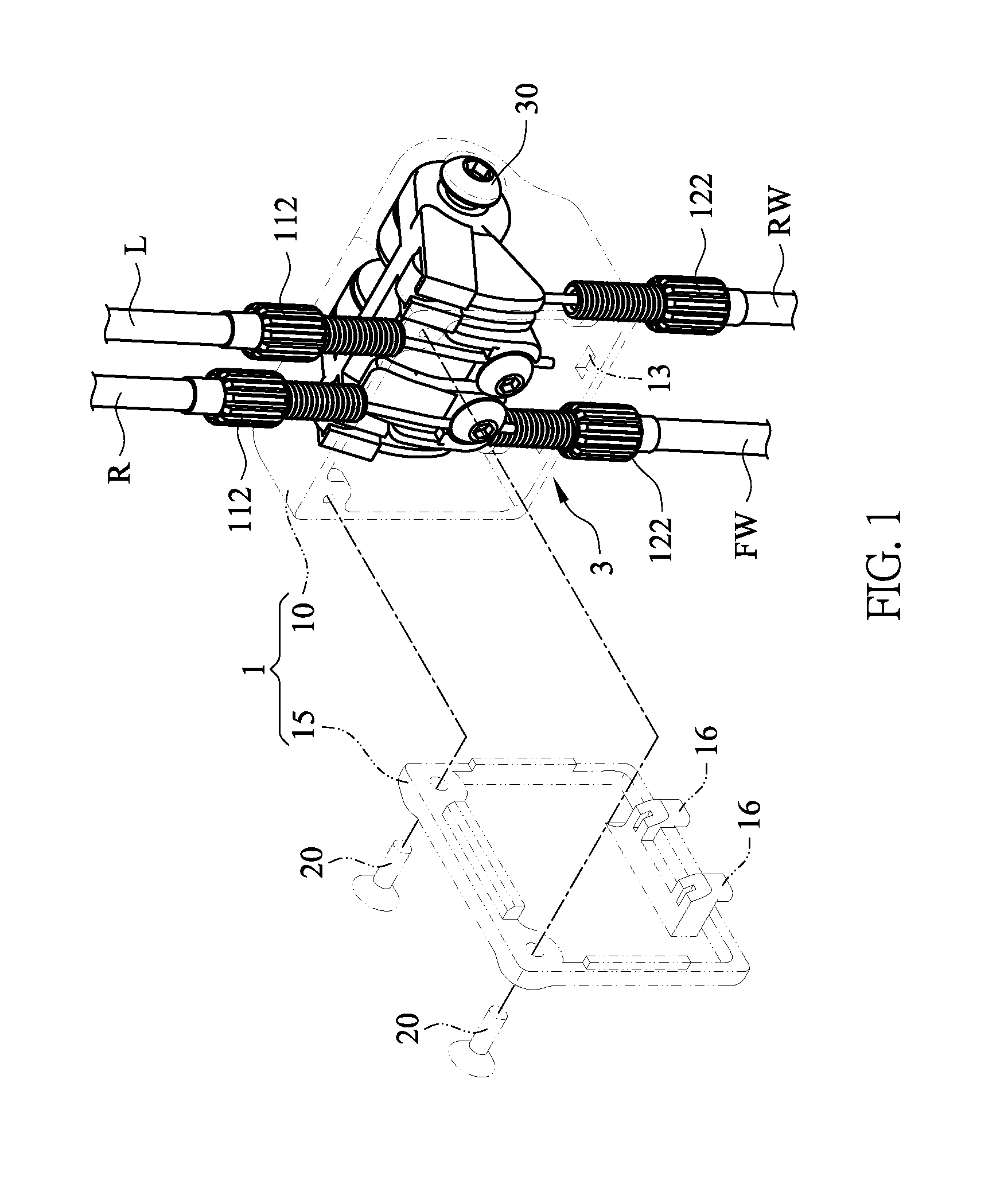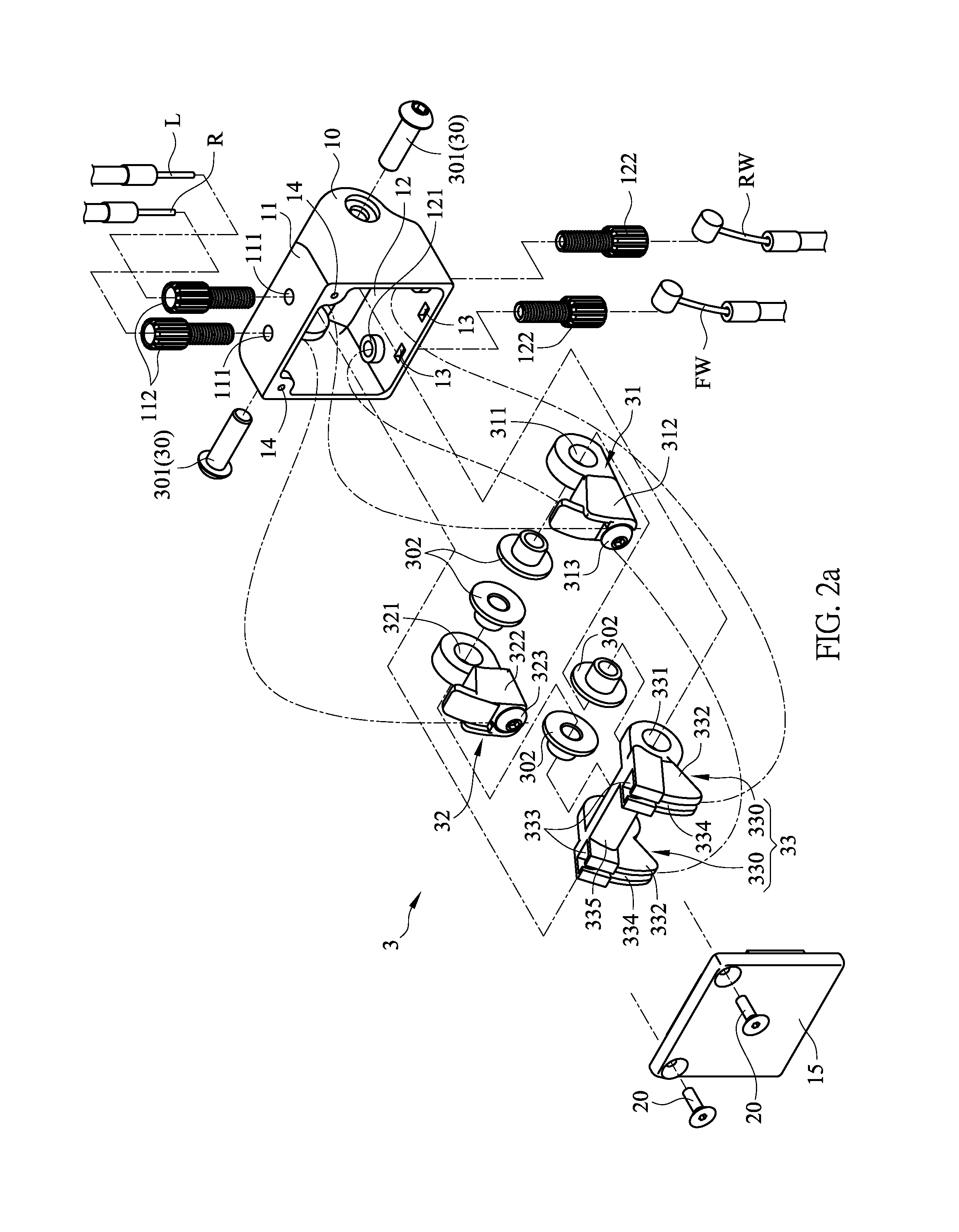Brake-aiding device
a technology of brakes and braking devices, applied in the field of transmission, can solve the problems of vehicle rolling over due to inertia, prone to skid and even rollover, and inability to stop, so as to achieve safe braking and prevent accidents
- Summary
- Abstract
- Description
- Claims
- Application Information
AI Technical Summary
Benefits of technology
Problems solved by technology
Method used
Image
Examples
first embodiment
[0032]Referring to FIG. 1 and FIG. 2a, in the present invention, a brake-aiding device primarily comprises a hollow casing 1 and a drive mechanism 3 installed therein.
[0033]The casing 1 is mainly composed of a casing body10 and a front cover 15. The casing body 10 is of a three-dimensional hollow structure that has a forward-facing opening and a front cover 15 covering the opening. When the front cover 15 combined with the casing body 10, the opening is closed. The casing body 10 comprises mortise 13 formed at its bottom 12 near the opening for fittingly receiving and thus positioning tenons 16 corresponding formed on the front cover 15. Fixing holes 14 are provided on the casing body 10 above the opening so that fixing members 20 can be screws thereinto to fix the front cover 15 to the casing body 10, thereby forming the closed casing 1. The casing body 10 has a top 11 and the bottom 12, each of which is provided with two through holes 111 or 121. In the through holes 111, 121, gui...
second embodiment
[0045]FIG. 7a and FIG. 7b depict the brake-aiding device of the present invention that is not activated. At this time the first revolver 41 and the second revolver 42 are pushed by the driven revolver 43 and abut against the bottom 12 of the casing body 10. When the rider wants to brake, as shown in FIG. 8a and FIG. 8b, by pressing the right brake lever, the right brake cable R is pulled and rotates upward to drive the second revolver 42 connected therewith to rotate upward. Then since the second revolver 42 abuts against the propping portion 435 of the driven revolver 43, the driven revolver 43 is driven to rotate with the second revolver 42, and pulls the front- and rear-wheel brake cables FW, RW to move upward, thereby braking the front and rear wheels. On the other hand, if the rider presses the left brake lever, as shown in FIG. 9a and FIG. 9b, the left brake cable L is pulled to move upward and drives the first revolver 41 connected therewith to rotate upward. Then since the f...
PUM
 Login to View More
Login to View More Abstract
Description
Claims
Application Information
 Login to View More
Login to View More - R&D
- Intellectual Property
- Life Sciences
- Materials
- Tech Scout
- Unparalleled Data Quality
- Higher Quality Content
- 60% Fewer Hallucinations
Browse by: Latest US Patents, China's latest patents, Technical Efficacy Thesaurus, Application Domain, Technology Topic, Popular Technical Reports.
© 2025 PatSnap. All rights reserved.Legal|Privacy policy|Modern Slavery Act Transparency Statement|Sitemap|About US| Contact US: help@patsnap.com



